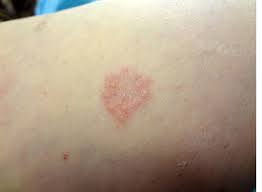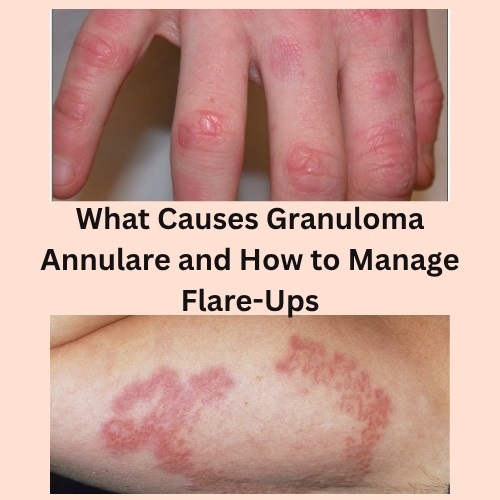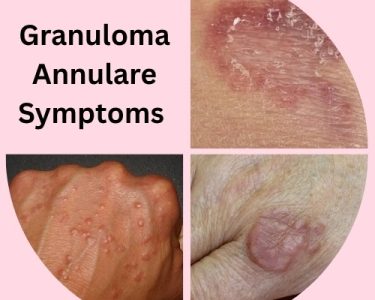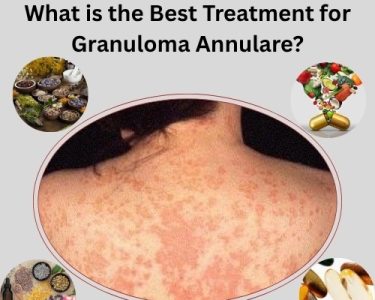What Causes Granuloma Annulare?
Granuloma annulare is a skin condition that causes ring-shaped patches or bumps to appear, usually on the hands, feet, or elbows. While it looks alarming, it’s typically harmless and not contagious. Still, the condition can be frustrating — especially when flare-ups occur without warning.
Researchers haven’t found a single cause, but several triggers are thought to contribute. These include immune system activity, skin trauma, and certain health conditions.

Common Causes of Granuloma Annulare
Let’s look at the most recognised granuloma annulare causes:
- Immune System Response
Many experts believe granuloma annulare stems from an overreaction of the immune system. Instead of responding only to harmful invaders, your immune cells may attack healthy skin tissue. This inflammation can lead to the distinct rings or bumps. - Skin Injury or Trauma
Simple injuries like insect bites, scratches, or surgical wounds may lead to granuloma annulare in people who are susceptible. The skin’s healing process can sometimes trigger a reaction that leads to raised, ring-like lesions. - Underlying Health Conditions
In some cases, what causes granuloma annulare links back to conditions such as:
- Diabetes, particularly type 1
- Thyroid disease
- Autoimmune disorders
People with these conditions may experience more frequent or widespread outbreaks.
- Infections
Viral infections, including hepatitis and HIV, have been associated with granuloma annulare in certain patients. These links suggest that your body’s immune response to infection may play a role in flare-ups. - Certain Medications
There have been reports of granuloma annulare developing after taking medications such as:
- Allopurinol (for gout)
- TNF inhibitors (used in autoimmune diseases)
- Some antibiotics
Not everyone reacts this way, but it’s worth considering if symptoms begin after starting new medication.
Related Articales: How Can I Stop Granuloma Annulare from Spreading
What Causes Granuloma Annulare to Flare Up?
Granuloma annulare is a chronic skin condition that often appears as raised, reddish or skin-colored bumps arranged in a ring pattern. While its exact cause remains unclear, several factors may contribute to flare-ups. What causes granuloma annulare to flare up can vary from person to person, but common triggers include skin trauma, such as cuts, insect bites, or burns. These localized injuries may activate an immune response that leads to the formation of granulomas. Additionally, some people report flare-ups following sun exposure or after certain medical procedures.
Another potential factor in what causes granuloma annulare to flare up is a connection to underlying health conditions. People with diabetes, thyroid disease, or autoimmune disorders often experience more frequent or severe outbreaks. In some cases, flare-ups may also be linked to infections or stress, both physical and emotional. These stressors may disrupt the body’s immune balance, making the skin more prone to inflammation and lesions associated with granuloma annulare.
Lastly, medications or allergic reactions can play a role in triggering flare-ups. Certain drugs, such as those used to treat high cholesterol or certain antibiotics, have been associated with granuloma annulare in some individuals. Though not common, it’s important to monitor new medications closely. Understanding what causes granuloma annulare to flare up is essential for effective management and prevention, and working closely with a healthcare provider can help identify and reduce potential triggers.
Diet and Granuloma Annulare
Granuloma annulare is a chronic skin condition that causes raised, reddish or skin-colored bumps arranged in ring patterns, commonly on hands, feet, elbows, or knees. Though it’s not harmful or contagious, it can be persistent and cosmetically bothersome. The exact cause is unknown, but it may be linked to immune system issues, diabetes, thyroid disorders, or infections.
One common question is: Can diet affect granuloma annulare? While there’s no universally proven dietary cure, many people report improvements by making changes to their eating habits. Here’s what the current understanding suggests:
Related Articales: Top 10 Best Vitamins Granuloma Annulare :Boost Your Skin Health
Possible Dietary Triggers
Some foods may trigger or worsen inflammation, possibly contributing to skin flare-ups:
- Sugar and processed foods: High sugar intake can increase inflammation and disrupt the immune system.
- Gluten: A few case reports suggest gluten sensitivity might be linked with granuloma annulare in some individuals.
- Dairy: Certain people find that reducing dairy helps ease symptoms.
- High-glycemic foods: White bread, pastries, and sugary snacks may spike insulin and increase inflammation.
Anti-Inflammatory Diet and Granuloma Annulare
A granuloma annulare diet rich in anti-inflammatory foods may help reduce flare-ups and support overall immune health. Consider including:
- Fruits and vegetables: Especially berries, leafy greens, sweet potatoes, and broccoli.
- Omega-3-rich foods: Like salmon, chia seeds, flaxseeds, and walnuts.
- Whole grains: Such as quinoa, oats, and brown rice.
- Spices like turmeric and ginger: Known for their anti-inflammatory properties.
Other Nutritional Considerations
- Hydration: Drink plenty of water to help flush toxins and keep your skin hydrated.
- Supplements: Some people have explored Herbal Supplement for Granuloma Annulare like vitamin D, zinc, or probiotics to support skin health, though evidence is limited.
- Elimination diets: Temporarily cutting out suspected trigger foods (e.g., gluten, dairy) under a doctor’s supervision may help identify dietary causes.
Some have found success following an anti-inflammatory diet, rich in vegetables, oily fish, nuts, and whole grains. If you’re interested in this angle, you can read more about granuloma annulare causes diet and how food choices may influence flare-ups.
Related Articales: Granuloma Annulare Rash:The Condition and Treatment Option
Causes of Granuloma Annulare Skin Lesions
Granuloma annulare affects the skin’s deeper layers. The inflammation tends to form in the dermis, which leads to the formation of raised, firm bumps. These lesions often take weeks or months to develop and usually disappear without scarring.
If the lesions spread or last a long time, it may be linked to an ongoing trigger like stress, diabetes, or an unrecognised immune condition. In that case, identifying the causes of granuloma annulare skin reactions becomes essential for long-term control.
Managing the Causes and Treatments Together
Addressing both the cause and the symptoms can improve outcomes. Granuloma Annulare causes and granuloma annulare ayurvedic treatment, where different options such as topical steroids, light therapy, and natural approaches are discussed in more detail.
There’s no single cure, but many people find their symptoms manageable by identifying what triggers their condition and treating flare-ups early.
Home Remedies for Granuloma Annulare
Granuloma annulare is a chronic skin condition characterized by raised, reddish or skin-colored bumps that form ring patterns, often on the hands or feet. While the exact cause is unknown, it may be triggered by minor skin injuries, infections, or underlying health conditions. Fortunately, home remedies for granuloma annulare offer a gentle and holistic way to manage symptoms and promote healing without harsh medications.
One effective approach is using natural anti-inflammatory and soothing agents such as aloe vera gel, tea tree oil, and apple cider vinegar. Aloe vera has cooling properties that help reduce inflammation and irritation, while tea tree oil’s antimicrobial effects may protect the skin from secondary infections. These granuloma annulare natural treatment options can be applied topically to affected areas to help calm the skin and speed up recovery.
Diet and lifestyle also play a vital role in managing granuloma annulare naturally. Including anti-inflammatory foods like turmeric, ginger, leafy greens, and omega-3-rich fish can support immune function and reduce flare-ups. Staying well-hydrated and minimizing stress through yoga or meditation can further enhance the effectiveness of home remedies for granuloma annulare, helping individuals manage this condition more comfortably over time.
What to Do Next
If you think stress, diet, or a medical condition may be behind your symptoms, speak to your GP or a dermatologist. They can help identify the underlying annulare granuloma causes in your case and suggest a plan that works for your lifestyle.
For more details on natural remedies for granuloma annulare and medical support, see our latest article on granuloma annulare causes cures.




